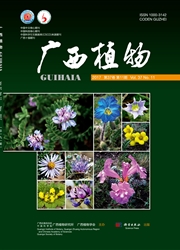

 中文摘要:
中文摘要:
根据中日越三方合作对越南红河流域周边/沿岸植被、生境、土壤和地貌特征等进行的野外踏勘和调查结果,结合前人研究成果,以红河汇水盆地沉积物中植物碎屑及相关微体的潜在源区为出发点,从地形地貌学的角度,阐述了越南红河流域周边植被的组合分布规律。结果表明:(Ⅰ)上游番西邦山区-河谷体系:植被垂直分分带明显,海拔由低到高依次分布有热带雨林、季雨林、亚热带常绿阔叶林、山地苔藓林、温带阔叶林、针阔叶混交林、高山灌丛和草地8类植被;(Ⅱ)河床-河漫滩-堤岸的河流体系:水生植物及沼泽植物草地、低矮灌丛热带树种;(Ⅲ)三角洲平原-沿海滩涂体系:沼泽森林-红树林。另外,原始植被经自然火灾或人类种植火烧后形成独特的次生植被类型主要为竹林、松林、草地等。
 英文摘要:
英文摘要:
Based on the investigation about vegetation, environment, soil, physiognomy etc. around the Red River carried out by the cooperation of China,Japan and Vietnam in 2007 and former researches, this paper summarized the distributions of vegetation around the Red River on geomorphology for finding the potential resource of plant chippings and microfossils of sediments in catchments basin. The results showed that: (Ⅰ)vegetation in Fansipan mountain-valley region was obviously distributed in vertical zones. There were tropic rain forest, monsoon rain forest, upland rain forest, subtropical evergreen broad-leaved forest,mountainous mossy forest, temperate broad-leaved forest, coniferous and broadleaved forest,mountainous shrubbery and grassland from the bottom to the top of mountains;(Ⅱ)riverbed-floodplain-bank of river: hydrophytes and swamp plant-grass and shrub; tropic trees; (Ⅲ)delta plain-mud foreshore: swamp forest-mangrove. And the bamboo or pine forest and grassland were the major secondary vegetations of those burned forests.
 同期刊论文项目
同期刊论文项目
 同项目期刊论文
同项目期刊论文
 期刊信息
期刊信息
